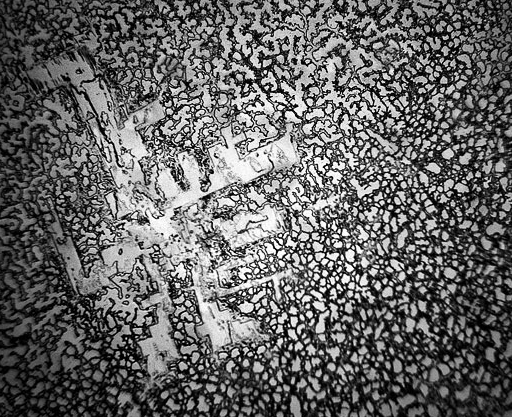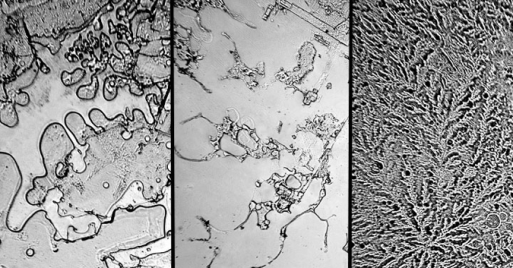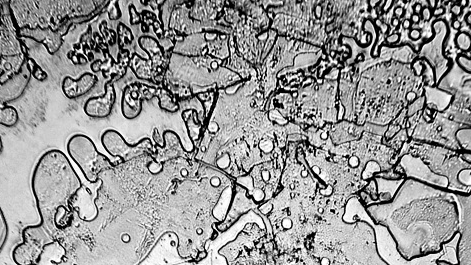Smithsonian photographer Rose-Lynn Fisher just revealed her new project, which is titled “Topography of Tears.” Celebrated for her mind-blowing, microscopic images of honeybees, this photo series is a collection of, yes, tears—tears from over 100 volunteers that were also captured on a microscopic level. It’s an honest project and one that is more important than you’d initially think. It demonstrates that science and sentimentality, particularly with grief, death and loss, aren’t mutually exclusive. From tears of grieving to tears of chopping onions, Fisher has been crying a river of insight into the way relate to our mind and body.
It’s an honest project and one that is more important than you’d initially think. It demonstrates that science and sentimentality, particularly with grief, death and loss, aren’t mutually exclusive.
Fisher uses a special camera for her project, one that can magnify “hundreds or even thousands of times in size, revealing startling, abstract forms that are far too small to see with the naked eye.” Topography of Tears took five years to make with a similar technology, and all began after an especially difficult loss. She was in the lab one day when, wiping her eye, she caught a glimpse of her own tear under the microscope. “It was really interesting,” she explains, “It looked like an aerial view, almost as if I was looking down at a landscape from a plane…Eventually, I started wondering—would a tear of grief look any different than a tear of joy? And how would they compare to, say, an onion tear?”
She says she “started the project during a period of copious tears, amid lots of change and loss—[with] a surplus of raw material. She realized that “everything we see in our lives is just the tip of the iceberg, visually,” and “had this moment where [she] suddenly thought, ‘I wonder what a tear looks like up close?’”
Fisher started noticing the differences in tears as she began collecting them from volunteers, commenting that they were like “aerial views of emotion terrain…”
Now for the classifications: tears can be placed into three categories, which include 1) psychic tears brought on by extreme emotions, 2) basal tears that exist to keep the eye lubricated (and create that weird eye-goo) and 3) reflex tears, which are our response to unexpected irritants like dust. Fisher started noticing the differences in tears as she began collecting them from volunteers, commenting that they were like “aerial views of emotion terrain…it’s amazing to me how the patterns of nature seem so similar, regardless of scale. You can look at patterns of erosion that are etched into earth over thousands of years, and somehow they look very similar to the branched crystalline patterns of a dried tear that took less than a moment to form.”
The images are scientific, but poetic in their starkness – jarring, even. It’s not easy to articulate our grief, nor to make it tangible so that we may better understand it during the grieving process. But here, Fisher has given us a much (much) closer look into our understanding of it.
Learn more about the project here.
You may enjoy:
- Artist Julian Stair: The Vessel, Death and the Human Body
- Before It’s “Too Late”: Seniors Share Fears Before Death
- Somebody That I’ll Never Know: A Tribute to Organ Donors

 Smithsonian Artist Captures Images of Dried Tears
Smithsonian Artist Captures Images of Dried Tears






 “In Case You Don’t Live Forever” by Ben Platt
“In Case You Don’t Live Forever” by Ben Platt
 Our Monthly Tip: Make an “In Case of Death” File to Ease Loved One’s Grief
Our Monthly Tip: Make an “In Case of Death” File to Ease Loved One’s Grief
 Passing of Beloved Comedian Births a New Comedy Festival
Passing of Beloved Comedian Births a New Comedy Festival














